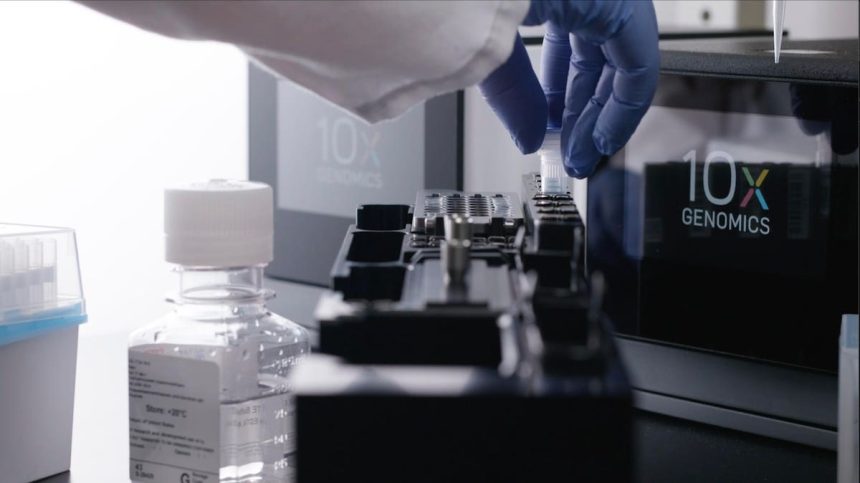Serge Saxonov, co-founder and chief executive officer of Bay Area-based 10X Genomics, started the biotech company in 2012. On its website, the company describes its mission as “[delivering] powerful, reliable tools that fuel scientific discoveries and drive exponential progress to master biology to advance human health.” Its work focuses on, it says, “innovative single cell, spatial, and in situ technologies enable discoveries across oncology, immunology, neuroscience, and more.” 1OX Genomics’ work has been cited in more than 5,000 papers and has earned numerous innovation accolades from The Scientist, most recently in 2021.
Late last week, 10X Genomics issued a press release in which they announced their Q2 2023 financial results. The company reported revenue of $146.8 million, a 28% increase year-over-year in the corresponding quarter.
“There’s so much potential in the areas of life science and biology,” Saxonov said to me in a recent interview by phone. “I like to think of this [time period] as the ‘century of biology.’ Some of the biggest, most transformative things in the world are going to come from the life sciences in the coming decades.”
The reason for this bullishness, Saxonov told me, is the industry is on what he called an “exponential trajectory of progress” in which scientists can envision finding cures for various cancers and other diseases such as Alzheimer’s. Looking at this bullishness from the intersection of disability and technology, it isn’t hard to share Saxonov’s optimism. As I wrote last year regarding Best Foot Forward on Apple TV+, although it’s obvious cancer is chiefly disabling and debilitating to the patient, its reverberating effects can have a profound impact on others in one’s orbit, particularly when it comes to emotional wellbeing and mental health. Likewise, caregiving and disability intersect in myriad ways, and caring for a family member or friend with Alzheimer’s is an arduous endeavor. There is a lot of biological and other scientific minutiae to the work Saxonov and team are doing; in a nutshell, however, the advances have the potential to immeasurably benefit humanity—people with disabilities very much included.
Of course, technology has been the main driver of 10X Genomics’ work, insofar as the rapidity with which technology progresses nowadays is a true boon for scientists who are navigating biology at the cellular level. Moreover, Saxonov called spatial biology, which involves the study of cells in context of its surroundings, the “hottest” segment of molecular biology.
10X Genomics’ bread-and-butter product is its Xenium software, which launched last December, allows researchers to visualize and analyze cells.
For people who aren’t scientists and doctors, such as those who are disabled, for instance, Saxonov told me the overarching belief at his company is the work they do will “advance human health in profound ways.” The so-called “strong conviction” in the impact of their work has two elements, he added. One is the intellectual rigor, whereby scientists and doctors are fascinated by tools such as artificial intelligence in doing their jobs. The second is, again, the unwavering belief that the discoveries made by 10X Genomics will contribute to the greater good of humanity. Saxonov was forthright in telling me were someone in his family diagnosed with cancer, he’d run the biopsy through his company’s tools in order to determine how best to treat it.
In terms of feedback, Saxonov said scientists generally are “very excited” by the work 10X Genomics is doing, as well as by the technologies they’re bringing to the field. Scientists, he added, are typically the company’s first customers because they have insight into “the long-term vision of biology and where the science is going” and can see “what our technologies enable” when it comes to actual work.
As to the future, Saxonov told me the primary objective is on helping cure diseases and, in the process, help people. At a fundamental level, the team at 10X Genomics hopes its technologies will prove instrumental in curing diseases like cancer. Whereas in the company’s early days, they were excited, Saxonov said, to get published in scientific papers, the main motivating factor nowadays is to build tools and technologies that enable breakthroughs in biology.
“What I find most rewarding, and I think it applies to everyone at the company, is being able to use our tools to point to a cancer and enable [scientists] to make it into a thing of the past,” Saxonov said.
Read the full article here










